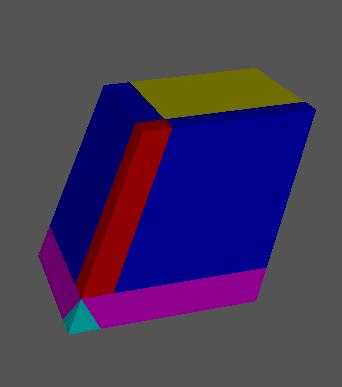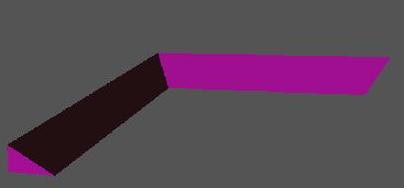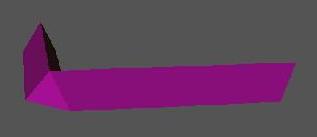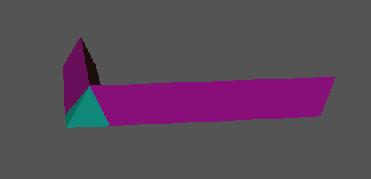To generate the pictures, we cheated: we drew them by hand first using Shi's data, and then built Geomview objects from the pictures using perl and qhull. A more clever way to generate the pictures would be to begin with Shi's theorem or from the definition and produce a list of alcoves. In particular, if there is any mistake in Shi's table (there definitely are some mistakes, but the ones we found shouldn't affect these pictures), or in our interpretation of Shi's results, this technique won't catch it.
There are five cells altogether (types 4, 31, 22, 211, 1111). The first figure shows all five at the same time, filling out the dominant chamber. In this picture, the origin is the light blue corner. The right axis corresponds to the fundamental weight l_1, the left axis to the fundamental weight l_3, and the vertical axis to the weight l_2.
Figure 12 |

Now we look at the individual cells. The cell corresponding to 1111 is just a single alcove, which isn't too interesting. The cell corresponding to 211 is a large V. Here we see three views: from the front and back, and from the back with 1111.
Figure 13 |

Figure 14 |

Figure 15 |
